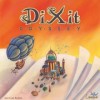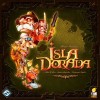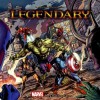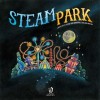Mike
gamer level 3
951 xp
951 xp
followers
5
5
Use my invite URL to register (this will give me kudos)
https://boardgaming.com/register/?invited_by=mikemugu
profile badges




recent achievements

I'm a Real Player!
Claim that you have played a game today by clicking the "Played Today!" button on a game page 25 times.
Claim that you have played a game today by clicking the "Played Today!" button on a game page 25 times.

Gamer - Level 3
Earn Gamer XP to level up!
Earn Gamer XP to level up!

Follower
Follow another gamer by clicking "Follow" after reading a review or viewing their profile.
Follow another gamer by clicking "Follow" after reading a review or viewing their profile.

I'm Gettin' the Hang of It
Claim that you have played a game today by clicking the "Played Today!" button on a game page 10 times.
Claim that you have played a game today by clicking the "Played Today!" button on a game page 10 times.





















![Go to the Level 7 [Omega Protocol] page Go to the Level 7 [Omega Protocol] page](https://boardgaming.com/wp-content/uploads/2013/06/LEVEL-7-Omega-Protocol--100x100.jpg)
























Fantastiqa
Overview
Fantastiqa is a game with a wild imagination. Players start with a starting deck of cards that include weapons used for subduing monsters on the board. Weapons include things like toothbrushes, spatulas, cats, and other items you would usually not consider weapons. You also start with a trusty gem sniffing dog and a peaceful dragon (they don’t do much). Players then travel the board (called going adventuring) with the goal being to complete different quests. Players lay cards to subdue monsters (for example, a Toothbrush might subdue the Rabbits of Unusual Size), which then allows the player to put both the card they used to subdue the monster, and the monster itself into the discard pile (this is the deck building part). As you deck gets more powerful, it allows you to complete more quests and eventually win if you reach the quest goal before the other players.
Setup
The setup of this game can take a few minutes. The board is laid out on the table and locations are placed randomly on the board (there are 6 locations). Each location then randomly gets a statue. Statues are used as stores where you can visit and buy cards. The various statues are:
Quest Chest:
Allows a user to draw three new quests and keep one or more as personal quest cards.
Beast Bazaar:
Allows a user to draw three beast cards, and buy any number of them they can afford. Each card costs 3 gems.
Artifact Tower:
Allows the user to draw three artifact cards, and buy any number of them they can afford. Each card costs 2 to 4 gems.
You then have to prepare the creature deck. This is the deck that is drawn from for the purposes of replenishing the board with monsters. The deck is designed to be balanced and therefore there are specific cards that start on top, some that start in the middle, and then some that go on the bottom. It takes a few minutes to do this because you have to go through each card and make sure it is in the correct deck. The way we manage this is that we put the game away with the creature deck already setup for next game.
Okay, almost done. Everyone then gets a starting deck that matches their player, along with a Dog and a Peaceful Dragon. Additionally, everyone starts off with a starting Quest and starting Artifact card. These are chosen by each player before the game starts. Each player also gets a player token in which they place on one of the locations on the board.
Gameplay
Gameplay is pretty simple actually. On your turn, you draw cards to get your hand up to 5. You then replenish the board of monsters and shared quests. There are 6 locations on the board, and a trail between each. Each trail between each location gets a creature from the creature deck. Additionally, there are two shared quests on the board. If at any time one has been completed, this is when you would replenish it with a new one from the Quest Chest.
I should mention that Shared Quests are quests that anyone can complete, while personal quests are those that only the person holding can complete. The quests are fairly simple and involve having the correct cards, along with being on the correct location in order to complete. For example, you may need two toothbrush cards and be on the Hills location in order to complete the quest.
Once you have replenished the board, you can now take your turn. On your turn you can take 1 action which includes:
* Go Adventuring
* Visit a Statue
* Complete a Quest
You also can take any number of free actions (e.g. using a magic carpet to fly to where you need to go instead of having to subdue a creature to get there).
To go Adventuring, you simply move from one location to the other, but in order to do so you must subdue the creature that is blocking your path. You can do this as many times as you can with your given hand of cards (so you can move from the hills, to the frozen wastelands, to the wetlands if you can subdue each creature in your path).
You then pick up the creatures you subdued during your turn, put them in your discard pile and your turn is over.
Visiting a statue allows you to draw cards from the Artifact Tower, Quest Chest or Beast Bazaar depending on which statue is on the location you are standing. (For an explanation on these see above).
The other action you can take is completing a quest. When you have the required cards, and are on the location that matches the quest, you can complete that quest. This gives you quest points and usually some number of gems.
The game continues until someone scores enough quest points to match the games goal (which varies depending on how many players are playing).
Impressions
I first purchased this game almost a year ago and we still bring it out to play as a family. One of the things I love about this game is the pure creativeness of it, without being dark. It makes it a great game for the family to play. It also has a really good balance. My wife and I play teams against my two daughters (11 & 12) and each time we have played, the game has been close. I like that there is enough strategy, but also enough luck to give balanced game play.
The components of this game are also second to none. From the box to the cards, everything is very well produced. Probably some of the best components I have ever seen in a game.
Summary
I would recommend Fantastiqa to any family that is looking for something they can play with the kids. The theme of the game is fantastic (no pun intended). The kids love it, my wife likes playing with us and it is fun for me as well. All around, the game really is fantastic.
My score overall would be 9 to 9.5.